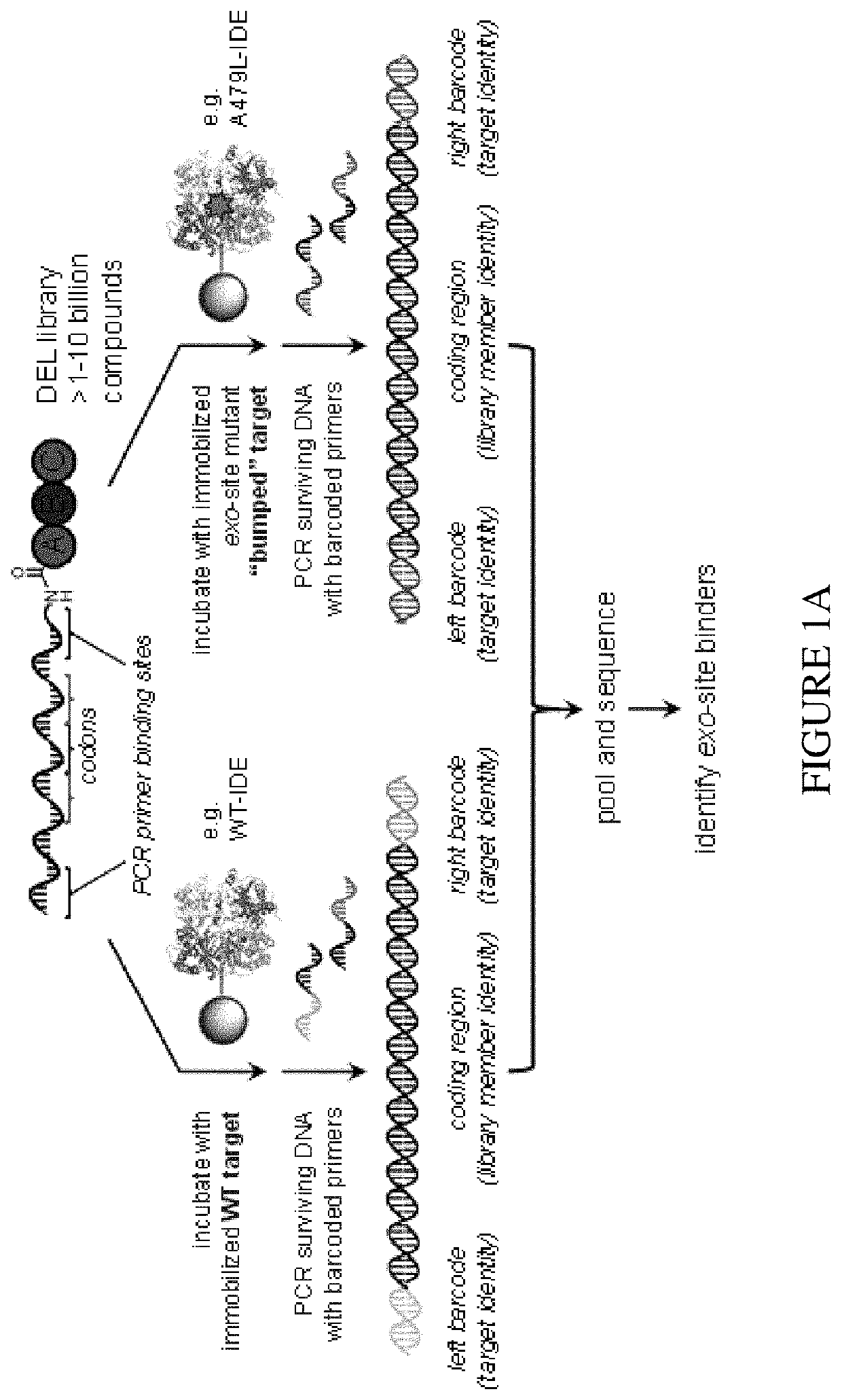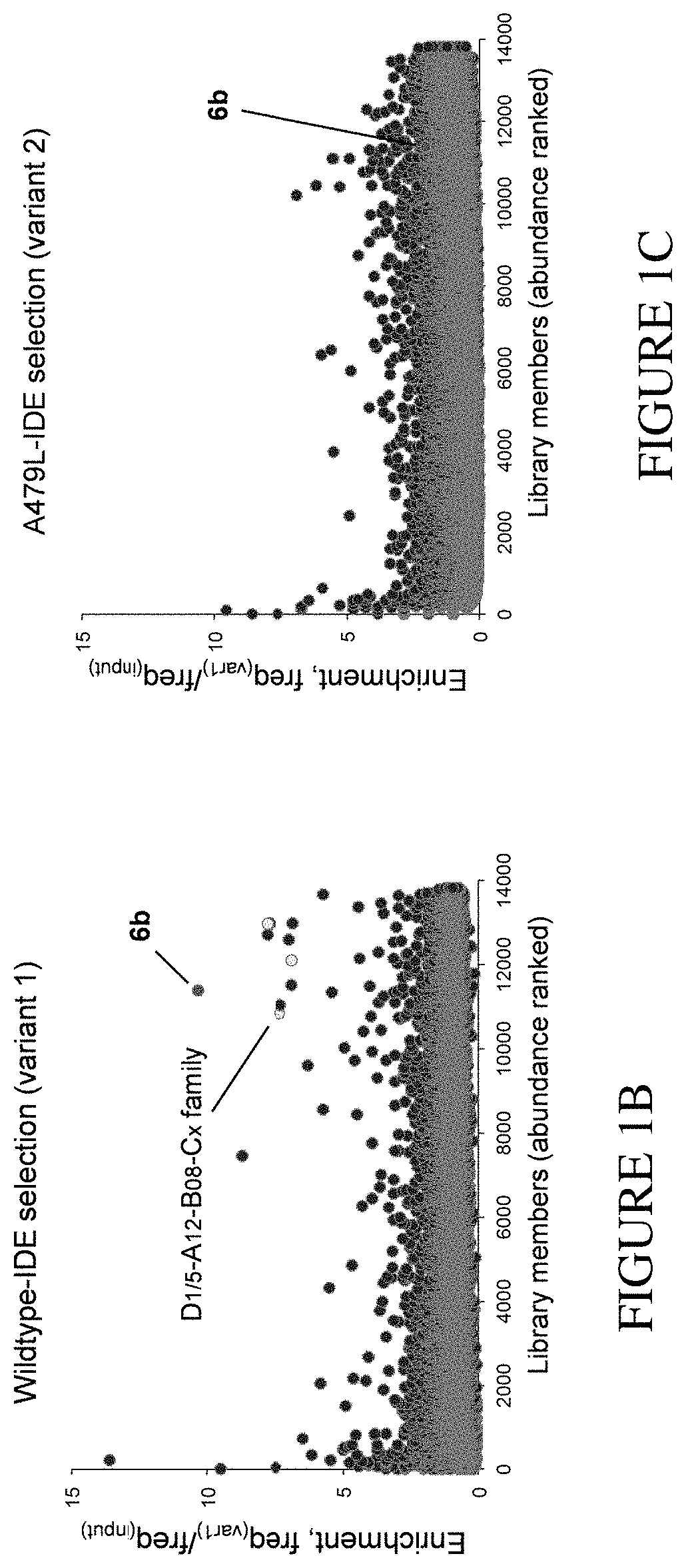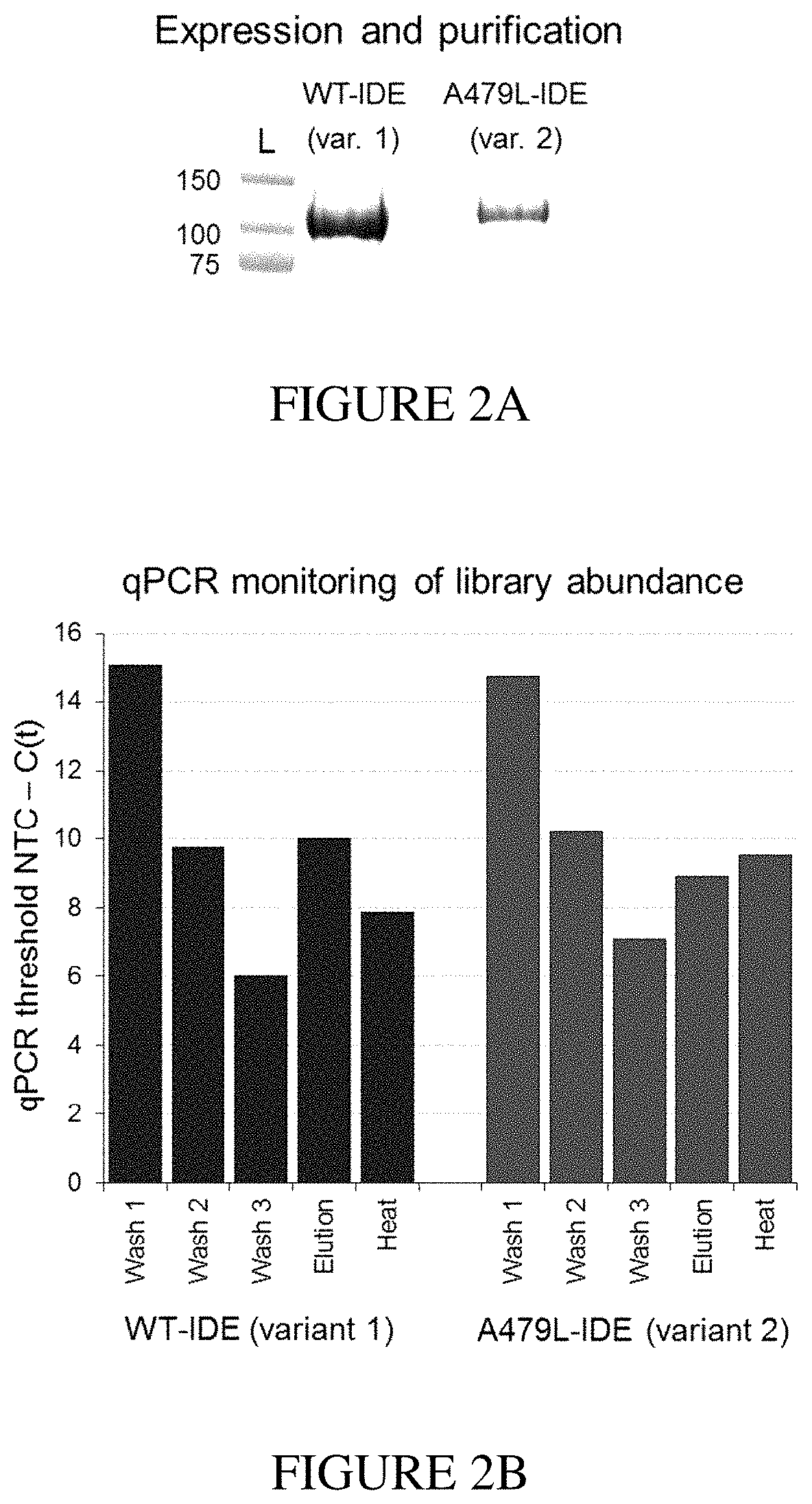Assay for exo-site binding molecules
a technology of exosite binding and binding molecules, applied in the identification of library members, biochemistry apparatus and processes, libraries, etc., can solve the problems of increased blood sugar levels, adverse effects, and inability to easily separate substrates from adverse effects, so as to improve the noise-signal ratio of non-specific binders, reduce the stochastic background noise, and improve the signal of non-exosite binders
- Summary
- Abstract
- Description
- Claims
- Application Information
AI Technical Summary
Benefits of technology
Problems solved by technology
Method used
Image
Examples
examples
[0144]In order that the invention described herein may be more fully understood, the following examples are set forth. The examples described in this application are offered to illustrate the agents, pharmaceutical compositions, and methods provided herein and are not to be construed in any way as limiting their scope.
Dual In Vitro Selection of a DNA-Encoded Library with Immobilized Wildtype Enzyme and Exo-Site Mutant
Site-Directed Mutagenesis, Expression, and Purification of Human Wildtype IDE and IDE-A479L Exo-Site Mutant.
[0145]The reported N-His6-tagged human IDE42-1019 construct (isoform containing the amino acids 42-1019 of the IDE sequence) was introduced in the expression plasmid pTrcHis-A (Invitrogen) using primers for uracil-specific excision reactions (USER) by Taq (NEB) and Pfu polymerases (PfuTurbo CX®, Agilent). The IDE gene was amplified with the primers
[0146]
(SEQ ID NO: 4)5′-ATCATCATATGAATAATCCAGCCA-dU-CAAGAGAATAGGand(SEQ ID NO: 5)5′-ATGCTAGCCATACCTCAGAG-dU-TTTGCAGCCAT...
PUM
| Property | Measurement | Unit |
|---|---|---|
| radius | aaaaa | aaaaa |
| radius | aaaaa | aaaaa |
| radius | aaaaa | aaaaa |
Abstract
Description
Claims
Application Information
 Login to View More
Login to View More - R&D
- Intellectual Property
- Life Sciences
- Materials
- Tech Scout
- Unparalleled Data Quality
- Higher Quality Content
- 60% Fewer Hallucinations
Browse by: Latest US Patents, China's latest patents, Technical Efficacy Thesaurus, Application Domain, Technology Topic, Popular Technical Reports.
© 2025 PatSnap. All rights reserved.Legal|Privacy policy|Modern Slavery Act Transparency Statement|Sitemap|About US| Contact US: help@patsnap.com



